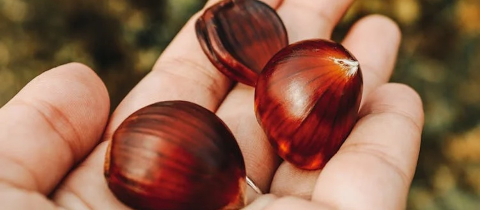Everybody celebrates Valentine’s Day differently. Whether you plan to pick up a bouquet of roses or wear purple in protest of the gushy holiday, there’s no wrong way to spend February 14th. Personally, I picked up some “conversation hearts” to share a sweet treat (and message) with my friends.
Also called “Sweethearts” or “Love Hearts,” these cute confectionaries are almost synonymous with Valentine’s Day. In fact, they’re one of the most popular candies sold for this holiday, second only to chocolates, of course. Here in North America, they were primarily produced by Necco up until 2018, when the company was bought out by Spangler Candy Company (also home of Dum-Dums, Candy Canes, and Canada Mints). But let’s back up a bit.
The production of conversation hearts actually originates in a pharmacy! Back in 1847, Oliver R. Chase created a medication-cutting machine to increase production speed at his Apothecary. Medicinal and binding ingredients were pressed together and sliced into round discs, forming lozenges. When these ingredients were swapped out for sugar and flavouring, we got the first candy-making machine. These round discs of pressed sugar were the original Necco wafers, which are still sold to this day! Soon after, Oliver’s brother, Daniel Chase added to this design by creating a machine that stamped red vegetable dye on the surface of the discs, printing messages on the candy. By 1901, these had evolved into the conversation hearts we know and love today: love heart-shaped pastel-coloured candies with short sayings of affection.
From Oliver’s iteration of the candy machine to today, the overall process for making conversation hearts remains pretty much the same. Sugar is crushed into a fine powder, combined with binding and flavouring agents, shaped, stamped, then enjoyed! Once they’ve been stamped, the candies are placed under heaters to dry, and then the different coloured hearts are mixed together before being packaged. And of course, today’s factories are much bigger, with Necco churning out 8 billion of these treats per year at their peak production.
Because of the switch from Necco to Spangler in 2018, we went a whole year without conversation hearts! Even in 2020, when the factories came back into operation, other shipping issues resulted in a year of blank conversation hearts (I guess they’re silent hearts?). But thank goodness, with Valentine’s 2023 coming up, the candies will be rolling out!
When I watched the production process through Martha Stewart's tour of Necco’s factories, I noticed some parallels with the modern production process for pills, caplets, and tablets. These solid forms of medications are made using a very similar process: the active ingredient(s) is/are crushed into a dry, powdered form, combined with excipients, then pressed into shape! The formulation, in this case, is much more complicated. Excipients, which are additional components aside from the drug’s active ingredient, include diluents, binders to hold shape, and disintegrants so that the pill can break down and disperse once swallowed. Other add-ons include pigments and flavourings just to make the medication more appealing! Colours have nothing to do with the function of the medication — they’re just there for identification or branding purposes.
Think Viagra, for example, which has been nicknamed the “little blue pill” for its classic appearance: diamond-shaped, blue pill, often imprinted with the brand name “Pfizer”. Or with birth control pills, the placebo/reminder pills are often a different colour than the usual hormonal ones. Pills can come in a number of different shapes, but most often they’re round or oval. That’s because rounded edges allow for easy swallowing, and the least vulnerability to chipping or breaking.
The shape will also alter the way the pills are broken down in your body! So, pharmaceutical companies have to do all kinds of research when deciding on the shape of the pill and developing the moulds/punches that are used to form the tablets. Another additional step that you won’t see in candy assembly is the addition of a coating to make these pills easy to swallow, regulate the release rate of the active ingredient, and lengthen the shelf life. Finally, pills are usually imprinted/stamped with text, numbers, or shapes giving certain medications their signature look, although none of them are as recognizable as a conversation heart.







